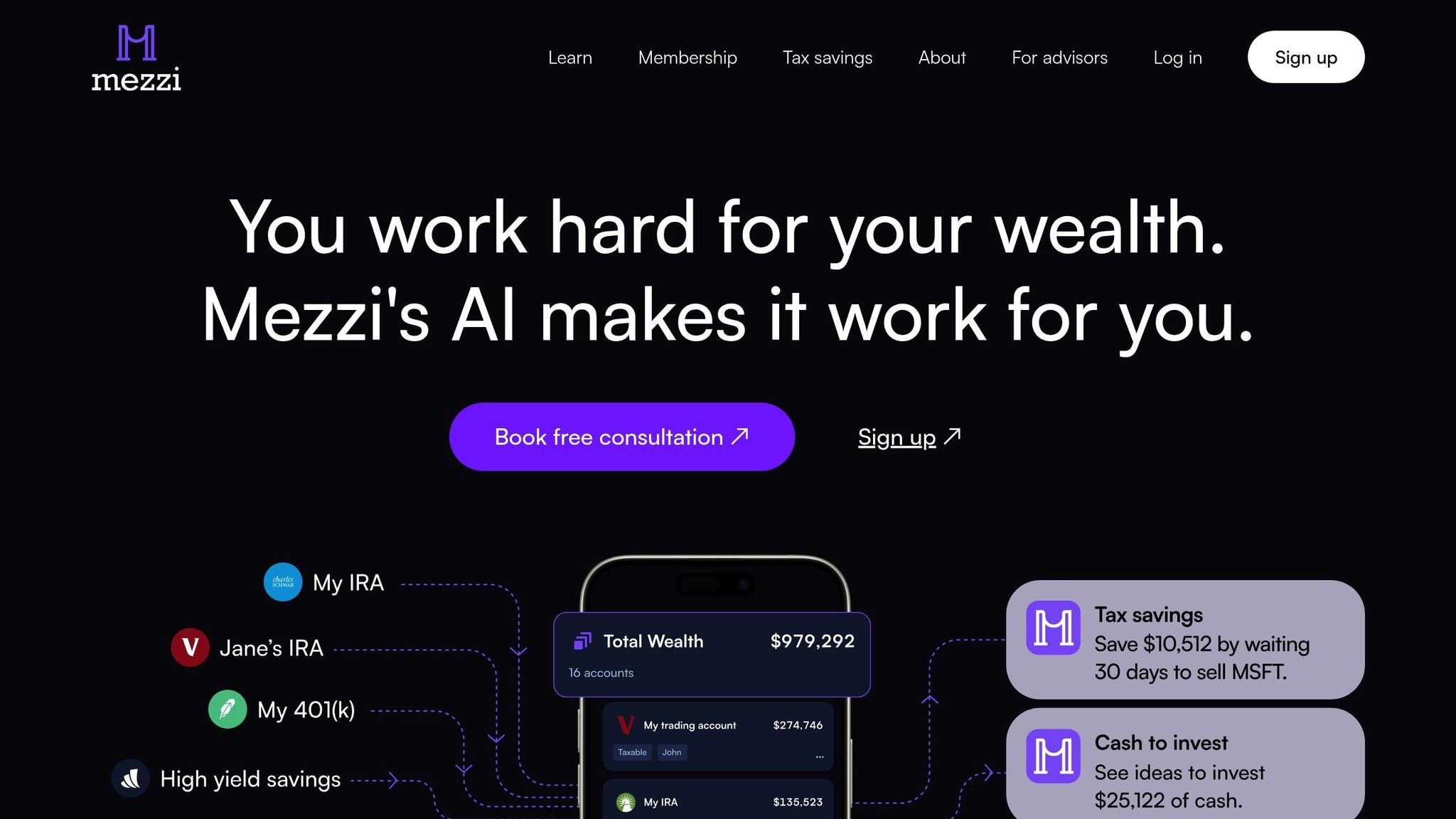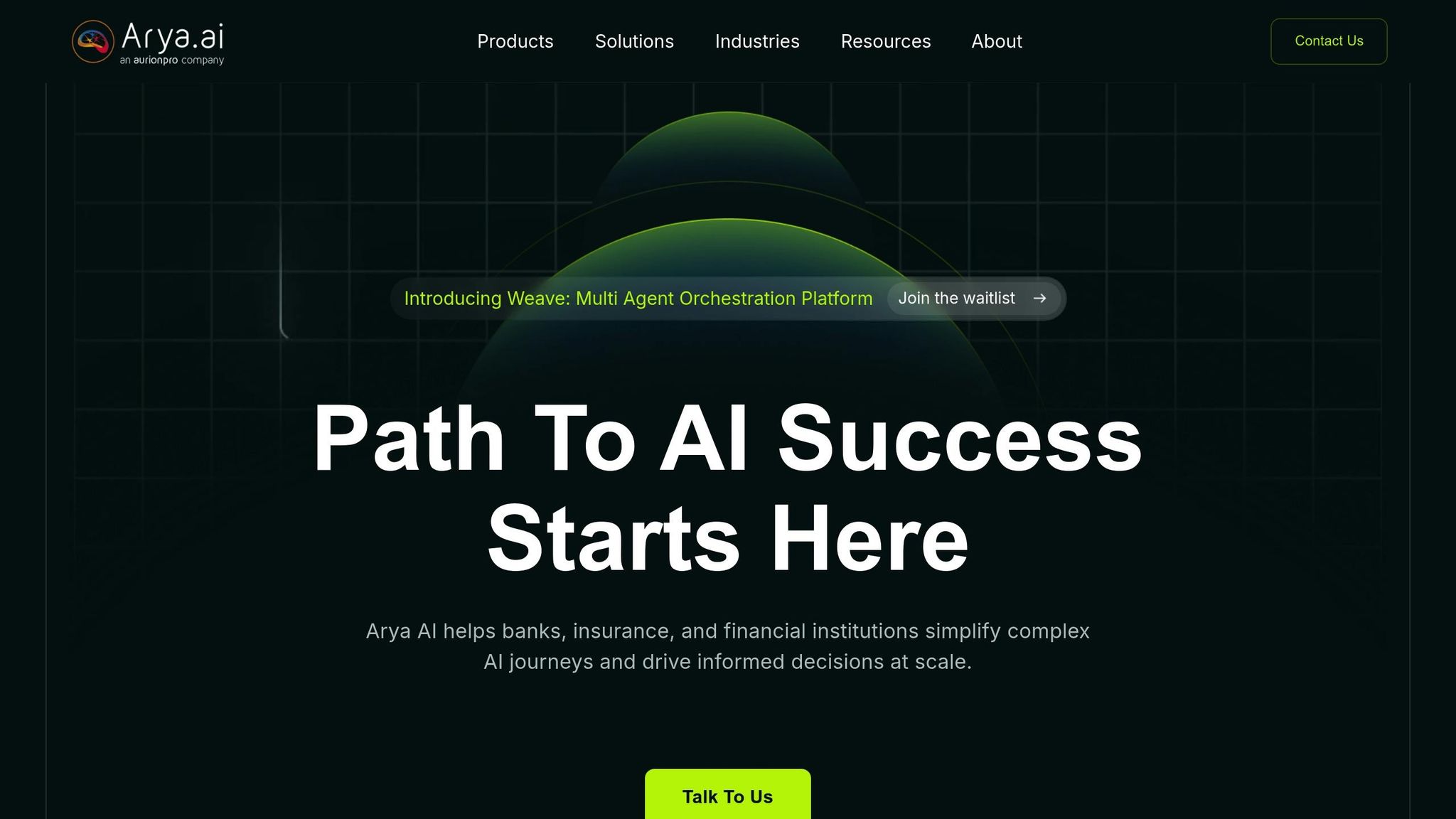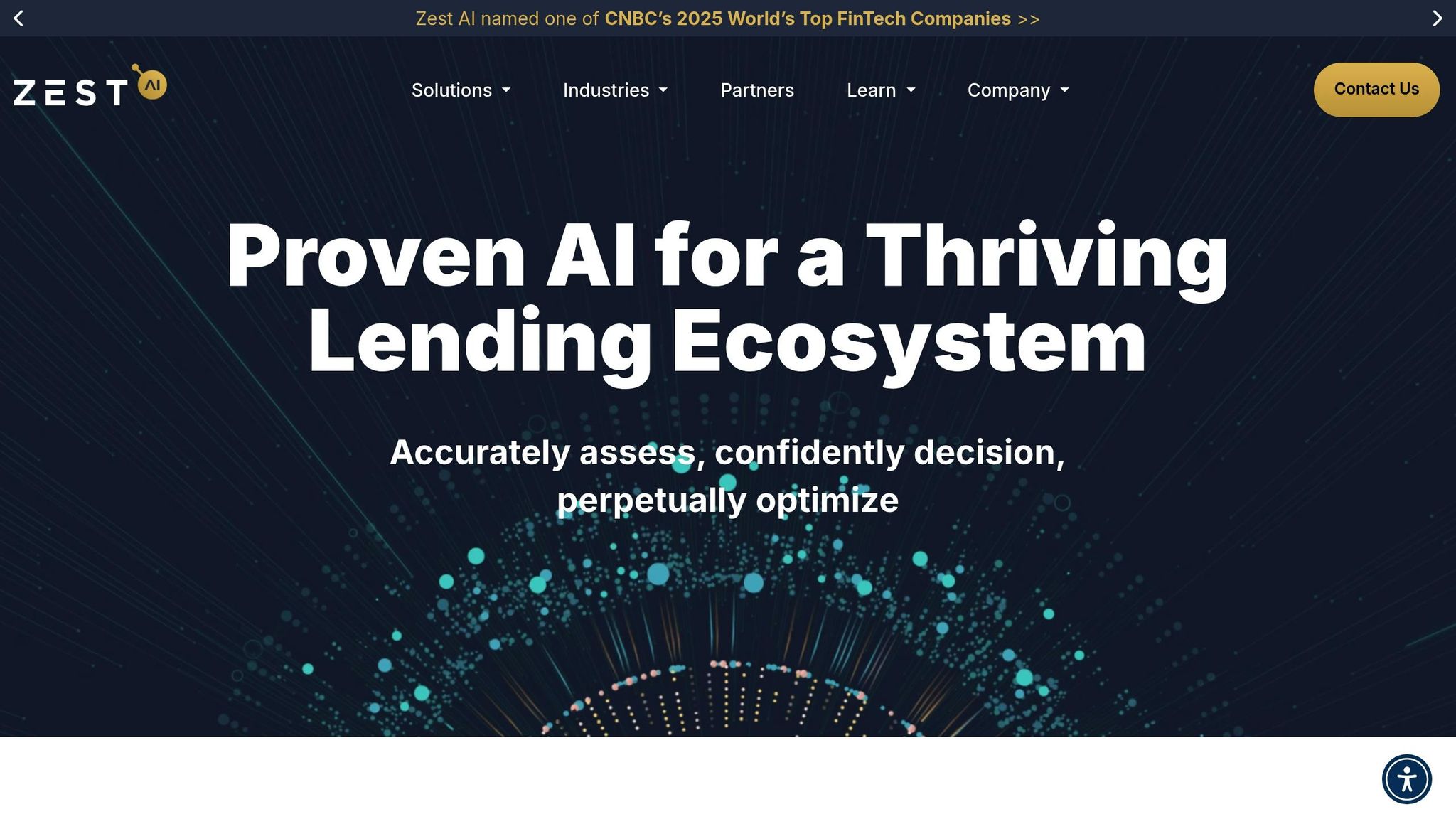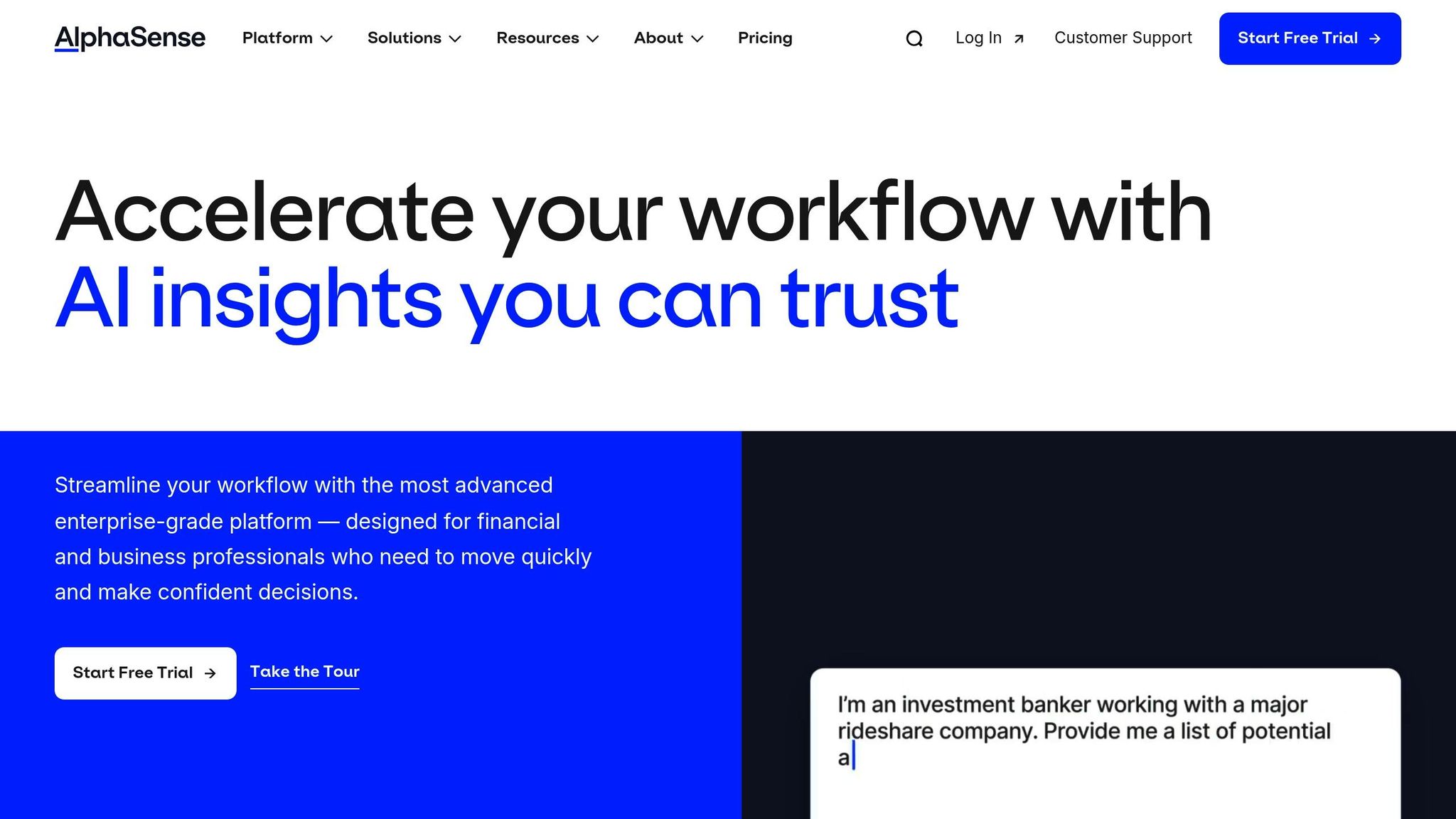Behavioral biases can cost investors and businesses millions. From overconfidence to loss aversion, these psychological traps often derail sound financial decisions. AI tools are stepping in to address this by analyzing patterns in financial behavior and providing actionable insights to counter bias-driven mistakes.
Here’s a quick look at five AI platforms tackling this challenge:
- Mezzi: Focuses on real-time investment behavior, helping individual investors avoid emotional pitfalls and optimize tax strategies.
- Arya.ai: Integrates with financial systems to identify and address biases in decision-making.
- Zest AI: Analyzes lending and credit data to detect hidden biases, ensuring fair and transparent financial processes.
- AlphaSense: Uses NLP to spot biases in financial texts like earnings calls and news, offering real-time alerts and detailed insights.
- Lucid Financials: Tailored for startups, this platform simplifies financial management with AI-driven insights and Slack integration.
Each tool serves a unique purpose, from individual investing to enterprise-level operations. Whether you’re an investor, a financial professional, or a startup founder, these platforms can help refine decision-making and reduce costly errors.
Uncovering Behavioural Biases with Machine Learning | London Business School

1. Mezzi

Mezzi's AI platform takes a deep dive into real-time investment behavior, identifying emotional pitfalls that can impact decisions. It provides actionable insights to help investors make smarter choices, minimize fees, and improve tax strategies - all aimed at refining the decision-making process.
2. Arya.ai

Arya.ai focuses on identifying behavioral biases in financial decision-making. Its platform provides clear, actionable insights while easily integrating with current financial systems to enhance their functionality.
Up next, we’ll take a closer look at how Zest AI tackles bias detection with its distinct methodology.
3. Zest AI

Zest AI focuses on using machine learning to uncover hidden biases in lending and credit assessments. By analyzing historical decision data, the platform processes large datasets to identify patterns where demographic factors may influence outcomes - patterns that traditional methods often overlook. This allows financial institutions to dig deeper into the root causes of inequities in their processes.
The platform's core strength lies in its ability to analyze decision-making data for signs of discriminatory practices or unconscious biases that can affect financial results. With this insight, institutions can pinpoint where these biases occur and understand their impact on lending or credit decisions.
A standout feature of Zest AI is its emphasis on transparency. It doesn’t just flag biases - it explains them. Financial teams receive detailed insights into how and why certain biases exist, providing the clarity needed to address the underlying causes rather than just the surface-level issues.
Zest AI also provides real-time feedback. When potential biases are detected, the platform sends alerts with actionable recommendations, helping organizations make immediate improvements. Over time, it tracks these changes across various business areas, giving teams a clear view of their progress.
Integration is another area where Zest AI shines. The platform easily connects to existing workflows through APIs and direct database links. It can pull data from loan management systems, CRM tools, and other financial software, eliminating the need for major infrastructure changes.
For regulatory compliance, Zest AI offers robust reporting tools. These tools create detailed audit trails that show how the algorithms detect biases, making it easier for institutions to demonstrate fair lending practices during reviews or to meet regulatory standards.
The platform also allows customization of its bias detection models. Whether it’s mortgage approvals, business loan evaluations, or investment recommendations, users can tailor the algorithms to focus on specific areas or adjust sensitivity levels to align with their unique needs and risk profiles.
With its detailed analysis, real-time feedback, seamless integration, and compliance-ready reporting, Zest AI equips financial institutions to identify and address biases effectively, supporting fair and equitable lending practices.
sbb-itb-17e8ec9
4. AlphaSense

AlphaSense uses natural language processing (NLP) to analyze a vast range of financial texts, such as SEC filings, earnings calls, and news articles. Its focus? Spotting cognitive biases like anchoring, confirmation bias, and herd mentality by identifying subtle language patterns. This capability enables the platform to deliver timely alerts and clearer insights to its users.
The platform’s real-time monitoring ensures that users are notified of potential bias signals within minutes of a document’s release. By processing new materials almost instantly, AlphaSense detects shifts in language or sentiment that might indicate biased thinking. These alerts give investment teams a chance to address blind spots before they influence critical decisions.
When a bias is flagged, AlphaSense doesn’t stop at general alerts. It highlights the exact text passages and data points responsible, helping users quickly identify and correct flawed assumptions. Financial professionals gain clarity on which documents or statements contributed to the bias, making it easier to trace and resolve reasoning errors.
AlphaSense also integrates smoothly with tools like Bloomberg Terminal and FactSet through APIs. This allows users to incorporate bias insights directly into their research dashboards or investment presentations without juggling multiple platforms.
Customization features add another layer of utility. Teams can fine-tune the platform’s bias detection based on their specific needs. For instance, equity research teams might focus on analyst biases, while fixed-income professionals could prioritize detecting credit risk-related biases. As users provide feedback, the system adapts, improving its ability to spot relevant patterns over time.
The platform also supports compliance by maintaining detailed logs of all bias detection activities. These logs document when biases were identified, which documents triggered the alerts, and how the information was used. Such records are especially helpful during regulatory reviews or internal audits.
Additionally, AlphaSense offers trend analysis to track how biases evolve over different market cycles and seasonal fluctuations. This feature helps users understand long-term patterns and adjust their strategies accordingly.
Like other AI-driven tools, AlphaSense empowers users to mitigate bias-related errors, improving decision-making processes with precision and speed.
5. Lucid Financials

Lucid Financials takes a fresh approach to financial management, offering a platform specifically designed for startups and fast-growing companies. Unlike standalone tools, it integrates advanced AI-driven insights directly into day-to-day financial workflows, making it easier for founders - even those without a dedicated financial team - to make informed decisions.
The platform's AI works behind the scenes to monitor activities like bookkeeping, tax services, and CFO support. It evaluates budgeting, expense approvals, and forecasting data to provide real-time insights that help founders identify trends and make decisions based on current financial information. By grounding decisions in up-to-date data, Lucid helps reduce biases and ensures a clearer financial picture.
One standout feature is its real-time Slack integration. Instead of requiring users to log into separate dashboards or sift through reports, Lucid delivers proactive alerts and updates directly within the communication tools startups already use. This conversational approach ensures you’re always informed when actionable insights become available, streamlining decision-making.
Lucid's onboarding process is quick and personalized. Over just seven days, the platform analyzes your historical financial data to tailor its insights to your business. This setup not only gets your books in order fast but also allows the system to adapt to your unique transaction history and decision patterns, providing more relevant guidance as it learns.
The platform also simplifies investor communications with its investor-ready reporting feature. Automated reports and forecasts provide clear, accurate, and professional financial narratives, making it easier for founders to present performance metrics to investors and board members. These reports are designed to be both reliable and easy to understand.
Additionally, Lucid Financials addresses complex tax scenarios that many founders face. Whether it's equity considerations or multi-entity structures, the platform flags potential risks early and offers tailored support to navigate these challenges effectively.
By consolidating financial operations into a single workflow, Lucid ensures that everything runs smoothly. Its AI continuously learns and improves with every transaction, delivering sharper insights over time. This empowers founders to make quick, informed decisions - critical for maintaining agility in a fast-paced startup environment.
Lucid Financials is also budget-friendly, with pricing starting at $150 per month. This makes advanced financial tools and AI-driven insights accessible to early-stage companies, providing support that’s often out of reach for smaller organizations. With its combination of affordability and robust features, Lucid allows founders to focus on what matters most: growing their business. Its thoughtful design sets the foundation for evaluating the strengths and limitations of this and other platforms.
Pros and Cons
After diving into the details of each platform, let’s break down the strengths and limitations of Mezzi and Lucid Financials to help you decide which one fits your needs. These two platforms demonstrate a trade-off between focused cost savings and comprehensive financial management.
Mezzi is designed to save individual investors money, with potential savings of up to $1 million in advisor fees over 30 years and tax optimizations reaching $76,123. However, its primary focus on personal investing may not meet the needs of organizations seeking broader financial tools.
Lucid Financials, on the other hand, offers an all-in-one financial management solution tailored for startups. It combines AI-driven insights with features like Slack integration, investor-ready reporting, and a quick seven-day onboarding process - all for a flat $150 monthly fee. While it’s highly suited for startups, it may not scale as effectively for larger enterprises.
Here’s a quick comparison of their key features:
| Feature | Mezzi | Lucid Financials |
|---|---|---|
| Primary Focus | Personal investment management | Full‑stack financial management for startups |
| Cost Reduction | Saves up to $1M in advisor fees and optimizes taxes (up to $76,123) | Transparent flat pricing at $150/month |
| Integration | Real-time alerts and tax-loss harvesting | Slack integration with real-time financial insights |
| Target Audience | Individual investors | Startups and fast-growing companies |
Ultimately, the right choice depends on your specific needs. If you’re an individual investor looking to cut costs and maximize tax efficiency, Mezzi might be the way to go. But if you’re running a startup and need an integrated platform to simplify financial operations, Lucid Financials offers a more tailored solution.
Conclusion
AI-driven bias analysis tools cater to a wide range of financial needs, from personal investing to enterprise-level operations. The key is finding the tool that fits your specific goals, budget, and workflow.
Mezzi is ideal for individual investors looking to balance affordability with effective portfolio management, offering tools that help streamline personal financial decisions.
For startups, Lucid Financials stands out with its user-friendly AI insights, Slack notifications, quick seven-day onboarding, and investor-ready reporting - all for $150 per month.
On the enterprise side, platforms like Arya.ai, Zest AI, and AlphaSense bring advanced capabilities to tackle more complex financial challenges, making them suitable for larger organizations with intricate needs.
As highlighted, incorporating bias analysis into your broader financial processes can bring more value than using it as a standalone solution.
FAQs
How can AI tools help investors and financial professionals recognize and reduce behavioral biases in their decision-making?
AI tools are built to tackle common behavioral biases like loss aversion, overconfidence, and emotional decision-making by examining patterns in financial behavior. They deliver real-time insights and practical feedback to guide users toward more logical and balanced choices.
Using data-driven algorithms, these platforms spot irregularities and behavioral patterns that could cloud judgment. They provide predictive insights and clear feedback, helping investors and financial professionals navigate biases and make better decisions in complicated financial scenarios.
How does Zest AI help financial institutions identify and reduce hidden biases in lending while staying compliant with regulations?
Zest AI supports financial institutions in identifying and tackling hidden biases within lending decisions through the use of advanced algorithms and carefully sourced data. Its technology is built to prioritize fairness and transparency, incorporating compliance features that meet regulatory requirements.
The platform also offers tools for explainable decision-making, enabling institutions to clearly understand and justify their lending choices. By leveraging methods like race prediction models to identify systemic biases, Zest AI helps promote fair lending practices while ensuring institutions comply with fair lending laws. These capabilities allow lenders to make credit decisions that are unbiased, compliant, and well-informed.
How does AlphaSense use natural language processing (NLP) to uncover cognitive biases in financial texts, and how can these insights enhance financial research workflows?
AlphaSense uses natural language processing (NLP) tools such as sentiment analysis, document classification, and topic clustering to pinpoint cognitive biases in financial texts. These techniques dig into the fine details of tone, language, and underlying meaning, offering a closer look at decision-making behaviors.
By weaving these insights into financial research processes, professionals can efficiently process massive amounts of unstructured data in real time. This leads to smarter decision-making, sharper risk evaluation, and a better grasp of market trends, making research faster and more effective.


